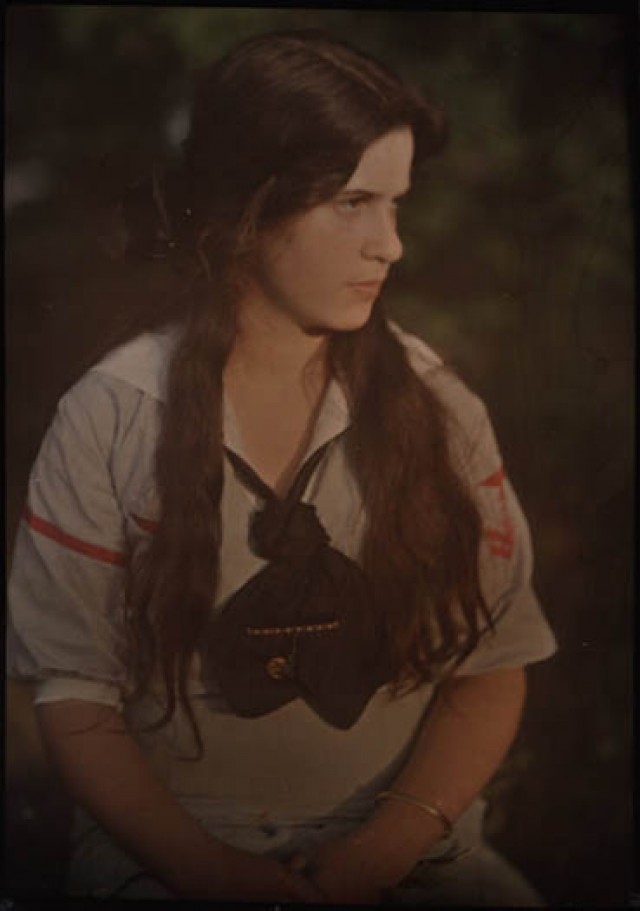Photographer/publisher/gallery owner Alfred Stieglitz (1864-1946) played an instrumental role in promoting photography as a fine art through his journal Camera Work and his gallery “Little Galleries of the Photo-Secession,” later renamed 291.
In 1907, Stieglitz traveled to Europe where he was introduced to the newly marketed Autochrome Lumière color photography process. Originally patented in France in 1903, the autochrome process received a U.S. patent in 1906.
Likely in 1910 at Oaklawn, the family home in Lake George, Stieglitz experimented with the Autochrome process. Included online, among others, are portraits of Stieglitz and his family, the painter Dorothy Obermayer Schubart, Stieglitz’s business associate Joe Obermeyer, Stieglitz’s niece Flora Stieglitz Straus and copy prints of paintings by Katharine N. Rhoades and Marion H. Beckett. Originally attributed to Stieglitz, some may be the work of Edward Steichen or Frank Eugene. These digitized glass plate photographs are part of the Alfred Stieglitz/Georgia O’Keeffe archive. Currently, only portions of these papers are available online.
View the complete collection of Autochromes online and explore the full archive in the Yale Finding Aid Database.
